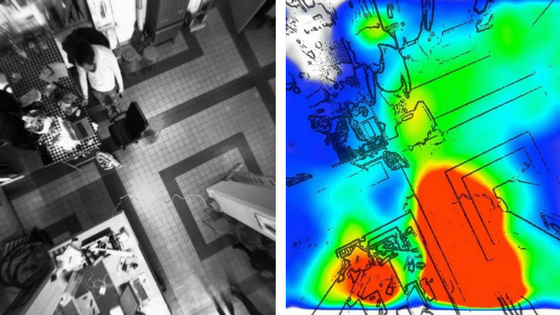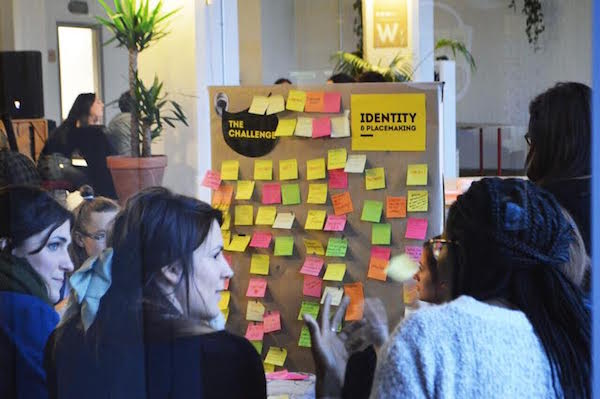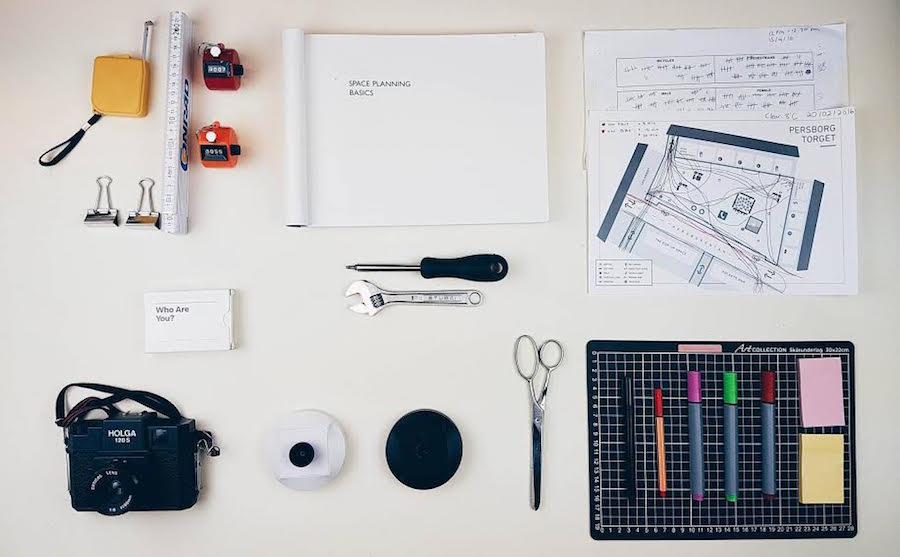Authored by Joshua Ng, creative director at The Connectors Society, a Swedish interdisciplinary studio blending collective intelligence and urban design.
Coworking spaces aim to replace the stiff, competitive, closed office with an open, community-based environment. As coworking grows, the variet of spaces also grows. While many are open-plan spaces that offer meeting rooms and private offices, a growing number offer facilities for people whose main work tool is not a laptop.
What’s more, a Deskmag survey released this May found that over 30% of coworking spaces globally are under twelve months old. For those who have thought about or are in the process of starting a coworking space, here are my top tips for measuring the flows and interactions of your space.
Why Do We Measure Spaces?
A space is a resource for people to do things. It has an identity and creates meaning in itself. It is an extension of those who use it and influences what users do and how users do it. We need to understand spaces to foster the purpose we ascribe to them.
By measuring a space, one can begin to understand the needs of the users and diagnose where improvements can be made. By integrating a measurement grid to collect data on a coworking space, one is able to determine how the different elements of the space impact how people use the space.

Coworking spaces are part of a wider movement to replace the competitive work environment with something more collaborative
What Do We Measure?
When trying to understand a coworking space, we need to measure two things: flows and interactions. Flows refer to the way that people move within a space. They signify how people walk through a space and the pace at which they do so; the frequency of and amount of time users spend in an area of a space. The interactions between people and between people and the physical space are also measurable. The tools needed to measure interactions are dependent on the kind of space, but the method is usually the same.
How Do We Measure Spaces?
We measure flows. When we attempt to measure flows, we are trying to find the answer to these three questions:
- How many people are using a space?
- How do people navigate through a space?
- Where do people spend time in a space?
These are things that can be measured in both analog and digital ways. The benefit of measuring a space in an analog format is that one gains insights from a ground level. If you are measuring how people navigate through a space, for example, you will also pick up on people’s facial reactions as they go through a space and other micro-expressions that may not necessarily be processed digitally. However, the benefit of going digital is that you will be able to have a precise dataset which can span a longer period of time at no extra effort. We recommend a mix of both.
The Analogue Way
-
Schedule recurring “observation sessions” for collecting data. These are sessions that vary in length and frequency depending on your availability and the amount of users of the space. The most important thing is to pick out times that are constant (every Tuesday at noon, for example)
-
Print out a scaled blueprint of the space
-
Start your observation period. Write down the date, time and any notable factors that could affect the flow of people (an event that is happening at the time, abnormal weather conditions, summer holidays, etc.) on the back of your blueprint sheet
-
Draw a line marking out the trajectory of every person moving throughout the space during your observation session. Try to be as accurate as possible
-
Mark how long people are staying in certain areas. Use different colors to signify different durations (for example, yellow for up to five minutes, orange for up to fifteen minutes, red for longer)
-
Make sure to count how many people are in the space during the observation period
Repeating this process over a series of observation sessions will reveal trends of how people are using the space. You will notice how users use the space in ways that fulfill or contradict the intended purpose of the space. Take note of these learnings after each session. Once you have collected a substantial dataset (you will know this once there are no new trends that show up in your observation sessions) you can begin to make changes to improve the space. Then repeat the measurement process to see how your actions have impacted (if at all) the flows of people in the space.
The Digital Way
There are many different technologies that can be used to collect data about a space. When measuring the flows of people in a space, a thermal camera is a dependable tool to accurately and anonymously monitor how a space is used. The capabilities of the camera depends on the model you choose. We use Modcam devices, which have people-counting and heat-mapping functionality. On an hour-by-hour basis, we can see how many people are walking in and out of the front door as well as where people are sitting the most via an online platform. The process of setting up the camera took no more than ten minutes and the data keeps coming in as long as the camera is on.
Other manufacturers of similar tools include Angelcam, Camlytics and if you’re into a DIY solution you can build your own Arduino-based thermal camera.

Thermal cameras are a useful tool to accurately understand when, where and how people spend time in a space
Measuring the Interactions
Interactions can be interactions between people and also between people and the space. To this end, you have to set the scope for how much you want to measure and how in-depth your measurements will be. As a spatial designer, your role is to draw correlations between the different kinds of data that you collect. Here are a few metrics that are easy to set up and run in a coworking space:
- Noise levels: Measuring the sound of a space reveals a lot. A space that is too quiet can be intimidating for first-time visitors while a space that is too loud can be distracting for people wanting to get work done. Finding the perfect decibel level is a matter of trial-and-error. Sound meters are available as apps which you can easily run in the background of your phone and record the sound levels of a space minute-by-minute.
- WiFi devices: Another way of counting people is by counting how many devices are connected to the wireless network of a coworking space. Although it may be more of an estimate than a precise figure, one can also deduct data on the busiest time of day, the average bandwidth per user and what kinds of devices are used. Check out this device-detector to find out who is on your network at any point in time.
- Travelling chairs: Sometimes people speak with their butts. Find out how the chairs travel around the space by recording the position of each chair at the beginning and end of the day on paper. Or, if you want to go digital (and have a bit of a budget) why not try GPS tagging the furniture with this little device?
- Toilet flushes: Because, why not? If your space does not have gender-neutral restrooms, then this is a way of collecting gender demographic data at your space. Here’s a DIY solution to making a simple flush-counter using a piece of string and a cheap pedometer.

Understanding the needs of the user is fundamental to actively designing a space that is fitting and inspires collaboration
And on that front, one last note on how to work with all the data you’ve collected:
Don’t Be a Robot
Data is great. It gives us a way to put a number on things that we sometimes don’t get to see with the naked eye. But as user-centered designers, we need to make sure that data is a tool which enhances our design process without monopolizing it. Try to really understand the context, speak to the users of the space and give lots of opportunities for people to give feedback. If done properly, the collective intelligence of the users should amplify the data collected on the space. This combination will help you design the best coworking space for your users.









